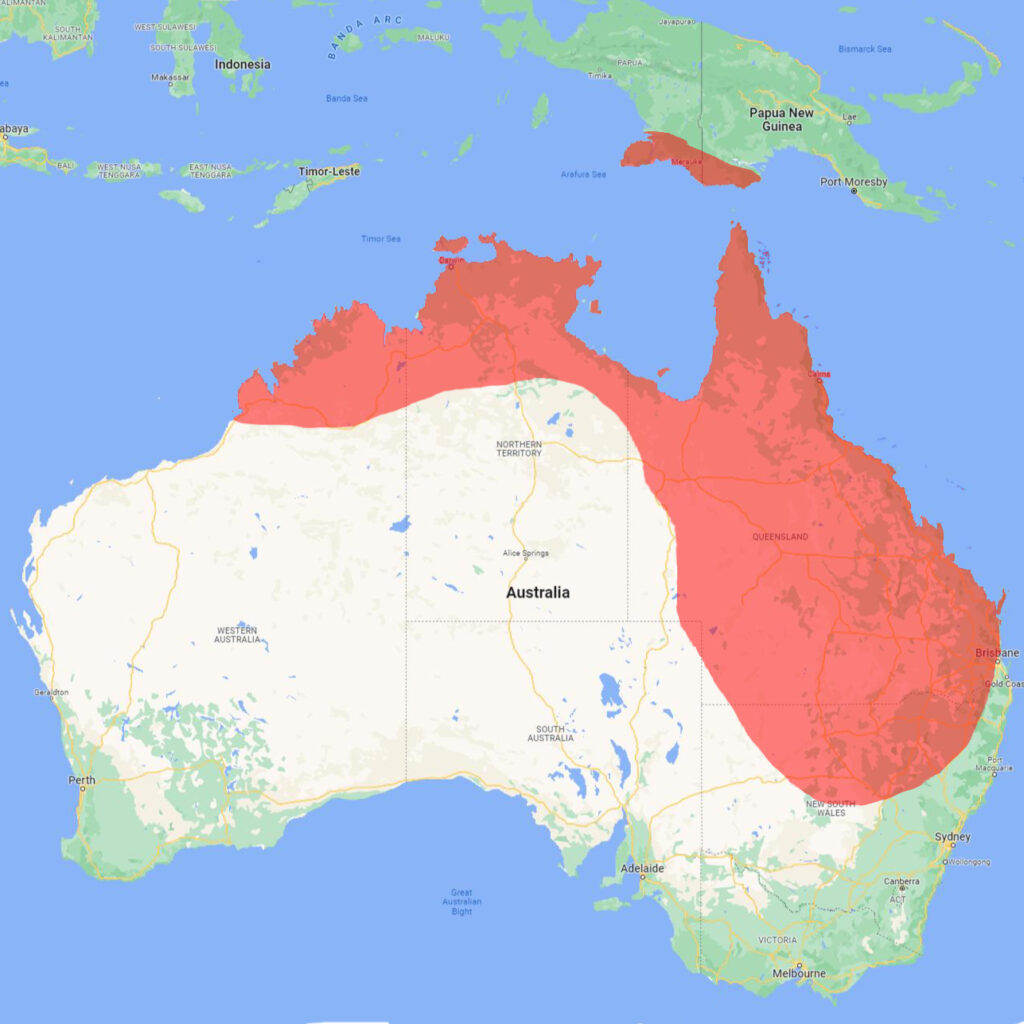Aprosmictus erythropterus - Red-winged Parrot
Red-winged Parrot – Aprosmictus erythropterus (Gmelin, JF, 1788) – is a parrot native to Australia and New Guinea.
It is fairly common among Australian and European breeders due to its beautiful colors.
The scientific name is based on the Ancient Greek words “erythros” and “pteron” meaning red wing.
Description
Medium sized parrot with an overall bright green colour and with a characteristic large red area on the wings. Blue tint on hindcrown and occiput. The male has black shoulders and upper back; deep blue lover back. The tail is green with a yellow tip. Orange/red eyes; grey legs; orange/red bill.
The female has similar but duller colors; shoulders and upper back is green; lower back and rump is blue; the the red area on the wing is smaller; eye is brown/orange; bill is dull orange with brown tip.
Juveniles simlar to adult female but with orange/yellow bill and pale brown eyes.
Size: 30-35 cm
Weight: 120-210 g
Taxonomy
- Order: Psittaciformes
- Family: Psittaculidae
- Genus: Aprosmictus
Synonyms
- Danish: Rødvingeparakit, Rødvinget Parakit
- English: Red-winged Parrot
- French: Perruche erythroptère, Perruche érythroptère
- German: Rotflügelsittich, Rotflügel-Sittich
- Portuguese: Periquito-de-encontro-vermelho
- Spanish: Papagayo Alirrojo, Papagayo de Alas Rojas
- Scientific: Aprosmictus erythropterus
IUCN Red List

BirdLife International 2016. Aprosmictus erythropterus. The IUCN Red List of Threatened Species 2016: e.T22685069A93057458.
https://dx.doi.org/10.2305/IUCN.UK.2016-3.RLTS.T22685069A93057458.en
Accessed on 12 March 2022
Habitat
Found in northern and eastern Australia and south-central New Guinea – see map to the right.
The habitat includes subtropical and semi-arid areas near riverine forrests, acacia scrubs, mangroves, savannah, woodland and farmland. Usually seen in pairs or small flocks up to 15 birds close to water.
Subspecies
Two subspecies are recognized:
- Aprosmictus erythropterus erythropterus (Gmelin, JF, 1788) : Eastern Australia
- Aprosmictus erythropterus coccineopterus (Gould, 1865) : South-central New Guinea and northern Australia. This subspecies is slightly smaller than the nominate form; it has more bluish tint on hindcrown and occiput; the red area on the wing is slightly paler.
Juveniles
Diet
Wild birds feed on various seeds, nuts, berries, fruits, nectar, blossoms insects and larvae.
The diet of captive birds should be based on pellets and a high quality seed mix with canary, oats, safflower, spray millet and some hemp – the mix should only contain a limited amount of sunflower seed. Also provide fruit and greens. Sprouted beans is also a very healthy supplement.
Aviculture
The Red-winged Parrot should be kept in a large aviary at least 3m long. Other species should not be kept in the same aviary. They are very acrobatic so provide plenty of different sized perches to climb; swings and ladders will also be appreciated. They also love bathing so provide bowls with fresh water.
Wild birds builds their nests high up, usually 11 m, in a tree hollow. The nest box should measure 30 x 30 cm.
The clutch usually contains 3-6 white eggs, that are incubated for 21 days. Fledging age is 5-6 weeks after hatching. While the hen incubates the eggs the male provides food for her.
Sexually mature after two years.






